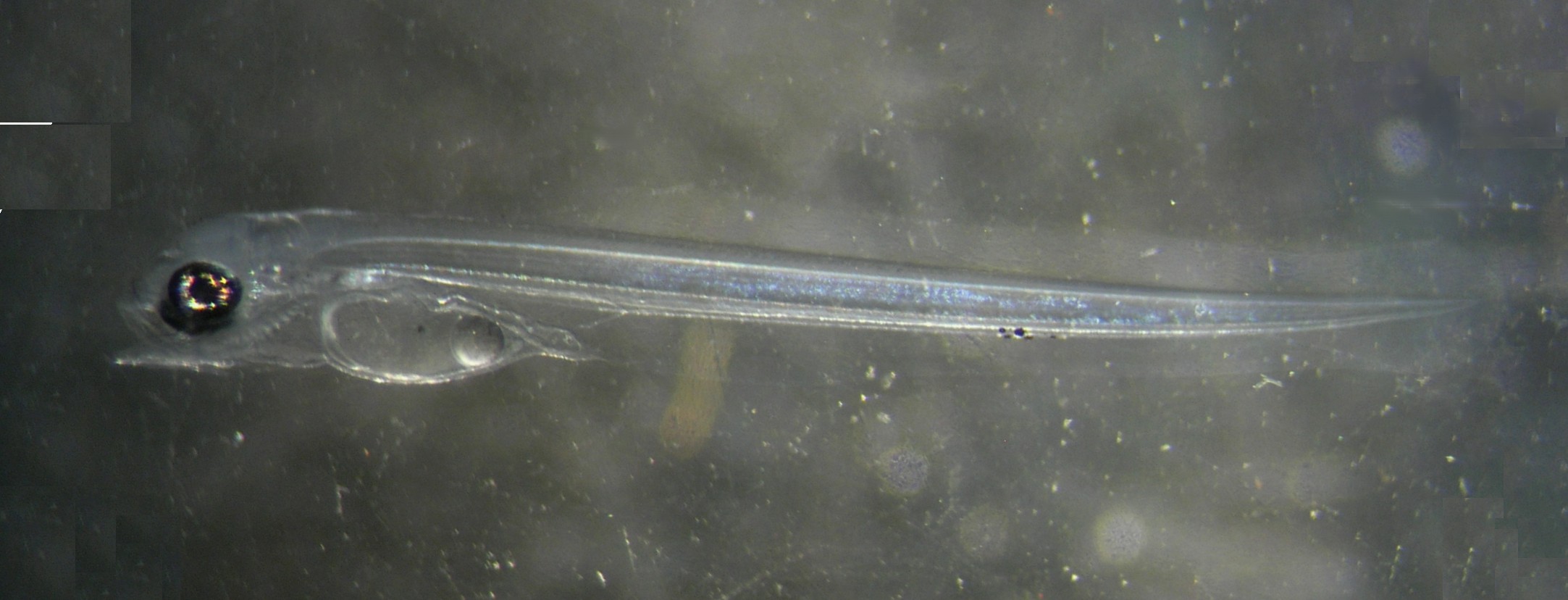Trichiuridae: L I A2
? Trichiurus sp.
Cutless fish





|
Egg diameter in µm |
Number of oil globules |
Diameter of oil globule in µm |
Yolk texture |
Perivitelline space |
Position of oil globule at hatch |
Gut length at eye- pigment stage |
Myomeres |
|
1620-1825 |
1 |
385-455 |
clear |
narrow |
stern |
36% of NL |
ca.90 |
Egg: In some fresh eggs the yolk is milky. Four black pigment patches develop on the embryo, behind the eyes, just behind the head, post-anus and mid-tail. Black pigment may be scattered on the yolk. The clear to light amber oil globule is often darkened by stringy black pigment on its surface. Incubation takes about 80 hours.
Larva: The early larva has indistinct black pigment over the foregut and yolksac, and at three points in the finfold (B, black arrows). By day 3, the pigment has almost disappeared (D). Note the wrongly positioned oil globule in this specimen. B: NH, C: 1 day, D: 3 days; E 5 days PC (23°C).
This egg and larva agrees well with the illustration in Ikeda & Mito (1988). The barcoding of this egg has given a puzzling result. Four hatched larvae have been barcoded, and they match a single adult, collected locally, and identified as Trichiurus lepturus. However, another 4 adults also identified as T. lepturus, and a single egg from this code, have barcoded as a separate species (BOLD), suggesting that the adult which matches the 4 eggs is not T. lepturus. Re-examination of the voucher specimen is needed to establish the true identity of the barcoded larva, and further larval barcodes to confirm the identification.


| Linked samples | Offshore | Inshore |
| Eggs | 16 | 7 |
| Hits | 14 | 6 |
The seasonal presence of this egg in the plankton off Park Rynie, does not indicate a particular spawning period (blue graph). The egg was only seen twice in the DHM samples, on both occasions in July. After a flurry of eggs seen in the period 1988-1991, this egg has become much less common off Park Rynie in recent years (white graph). Eggs in the Park Rynie linked samples, were too few to indicate distribution, but this fish is known to range from coastal waters and harbours, to over the shelf edge (Nakamura, 1986).